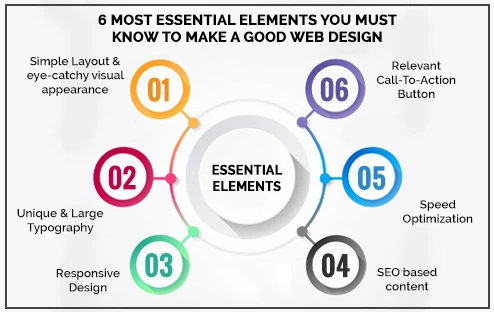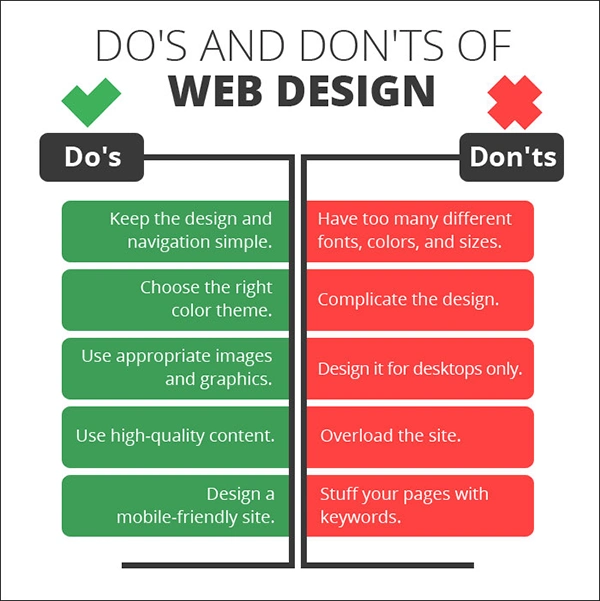How do you leave an impression on someone who is looking at your business for the first time? Flyers? Visiting cards? By making calls? Well, if you have an online presence or an online business, your website does the work for you.
This is why, your website must be attractive, captivating, as well as easy to use. According to various sources over the internet, a good benchmark for Average Time on a Page is 52 seconds, across multiple industries.
Hence, you have to build your website in a way that it makes the user spend as much time as possible. To achieve that milestone, we have curated this post to guide you on important tips for website design.
Keep reading. Also, learn about Develop an Effective Cybersecurity Strategy by reading this article.
Understanding the Role of Design in Website Success
A website design is not just about beauty and aesthetics. It must be functional and easy to use as well. If the user is unable to navigate through the webpage or is unable to do what he wants, the website is for no good. Hence, hiring a website design company in Michigan, is a must. Along with that, below are some points on the role of website design
User Experience and Conversion Rates
The conversion rate is the number of people you can convince to become your client. In other words, several people who became your customers after an ad or an offer is called the conversion rate. If the user finds value in your product or service and enjoys the user experience your website provides, he or she will effortlessly become your client.

Key Design Elements
- Navigation: Easy navigation through buttons and features is a great area to start with.
- Visual Hierarchy: Follow the rules of visual hierarchy to emphasize different areas.
- Mobile Responsiveness: The website must be optimized for mobile users as well since a majority of traffic comes from mobile phones.
- Loading Speed: Slow loading speed can lead to visitors escaping your web page.
The Art of Conceptualizing a Website Design
Creating a compelling design and convincing the audience is an art and science at the same time. Here is how it is done:
Understanding Your Audience
Understand the niche you are into and what the audience prefers. Delivering exactly what the audience demands is the best way to get in their minds.
User Journey Mapping
User journey mapping focuses on understanding the website experience of the user. It highlights the pain points, opportunities where the site can still be improved, etc.
Translating Brand Identity
A website complexly conveys your business’s identity to users. Each element, like the colour palette you go with, typography, visual hierarchy, or even the delivery of your message, leaves a significant impact on the visitor.
Planning the Launch
Creating a roadmap for your website launch is a very foundational step in the designing process. This phase involves a range of considerations that can further guide you to achieve the desired outcomes, here take a look at some of the:
Setting Clear Design Goals
The first step in launching a successful website is defining what your main objectives are. Do you want to increase your sales, generate leads, or just simply look to provide some information over the Internet? So, once you have a clear understanding of your plans, you can now go ahead with the website design that matters.
Creating a Timeline
To successfully launch a website, you need to go through a range of progressions such as creating content, designing, and finally testing the website. This is why it is often suggested to create a timeline of the progression to easily navigate to the launch.
Identifying Resources
Determine the actual resources needed for the website launch. This can include the right budget, team, and technology to set up a successful website.
Executing the Design
User experience is one of the most crucial aspects of the website design. In fact, do you know that almost 40% of the audience will leave the website if it takes more than 3 seconds to launch? Well, here take a look at some of the major considerations for choosing a deigning tool to establish a well-known communication.
Choosing Design Tools
When it comes to website building, choosing the right tool refers to making the whole process easy. For instance, a drag-and-drop website builder like Wix or Weebly is perfect for beginners and non-coders. Similarly, a more flexible CMS platform like WordPress or Drupal offers greater customization opportunities, requiring just some basic coding knowledge.
Collaboration and Communication
Establish some clear roles and responsibilities for your team through a proper means of communication. Additionally, you can use a project management tool to track the latest progress of the project.
Do You know?
39% of internet users are most attracted to the colour schemes businesses use on their website in comparison to any other visual element of the website.
Launch Strategy
Once your website is ready to go live, there’s a bunch of considerations that can significantly affect your website success. So, here’s how you can build a well-executed launch strategy.
Pre-Launch Checklist
There’s a pre-launch checklist that helps build some excitement and anticipation for your website launch. This includes using social media campaigns and content marketing and also a proper partner up with the relevant influencers.
Post-launch activities
Post-launch activity includes promoting your website through Google Ads, email marketing, and other social media channels to drive significant traffic to your website. In addition, this also includes building a strong relationship with the consumers by solving their queries and connecting them on social media.

The Bottom Line
In closing, launching a website from scratch and time-consuming process with a range of factors to consider, but it is exponentially rewarding in the end. In fact, according to some recent statistics, 50% of consumers agree that their impression of a business depends on the company’s website design. And, this is why it is often advised to businesses to have a strong attention to detail when building a standout website in the market.






